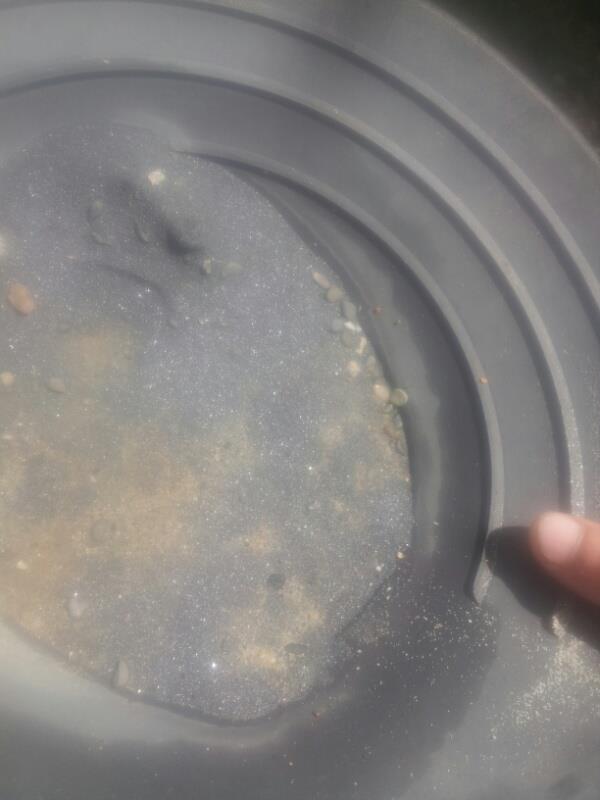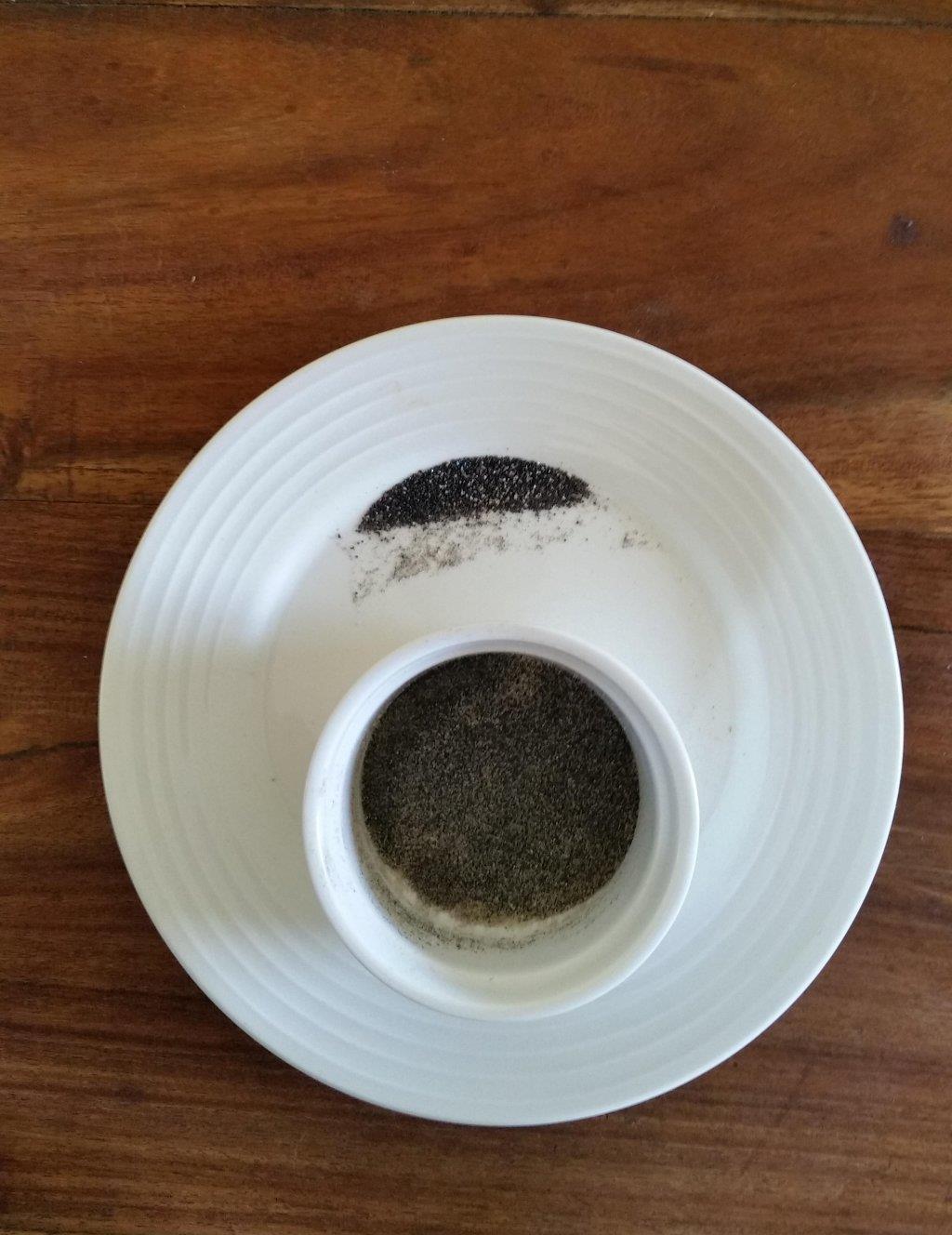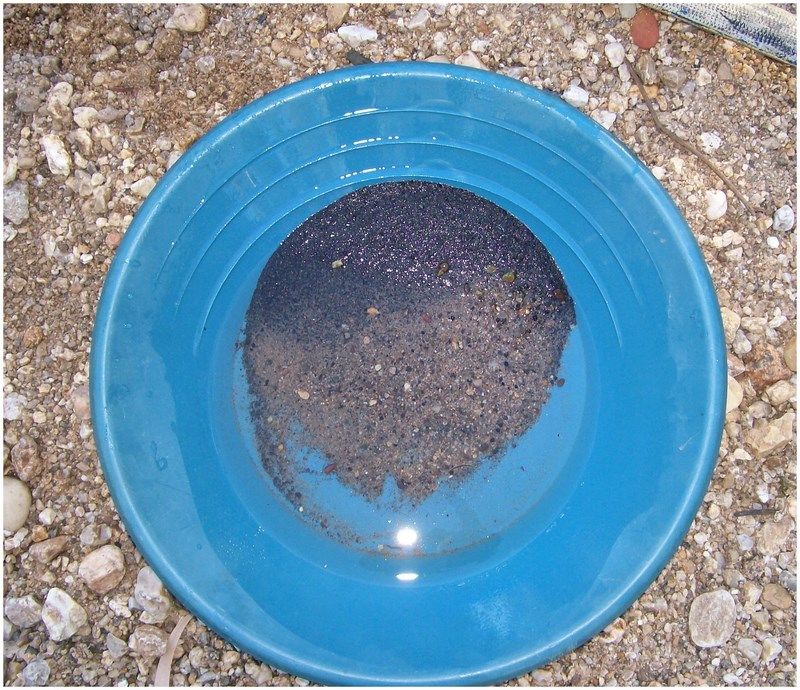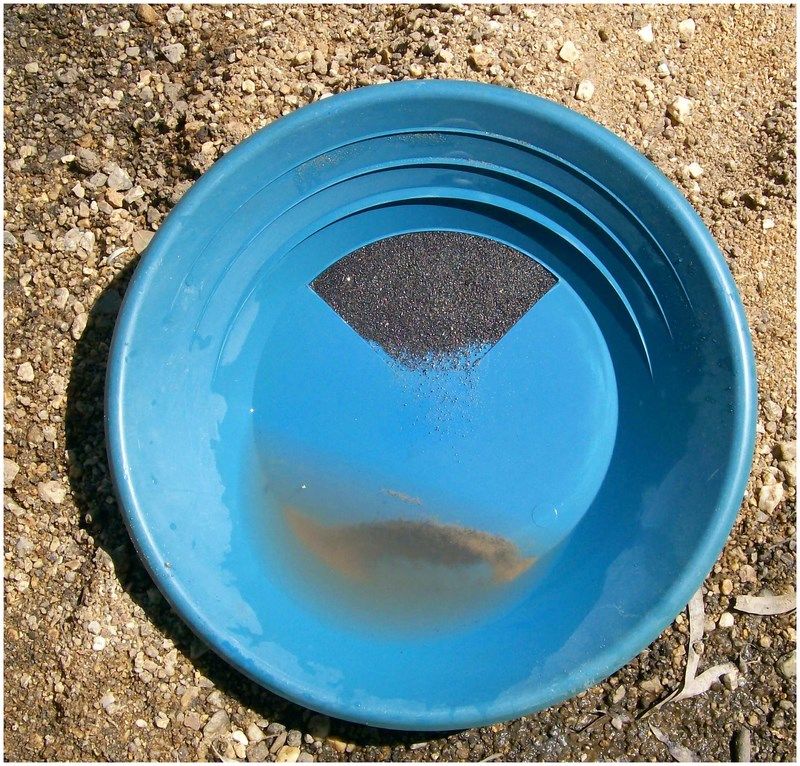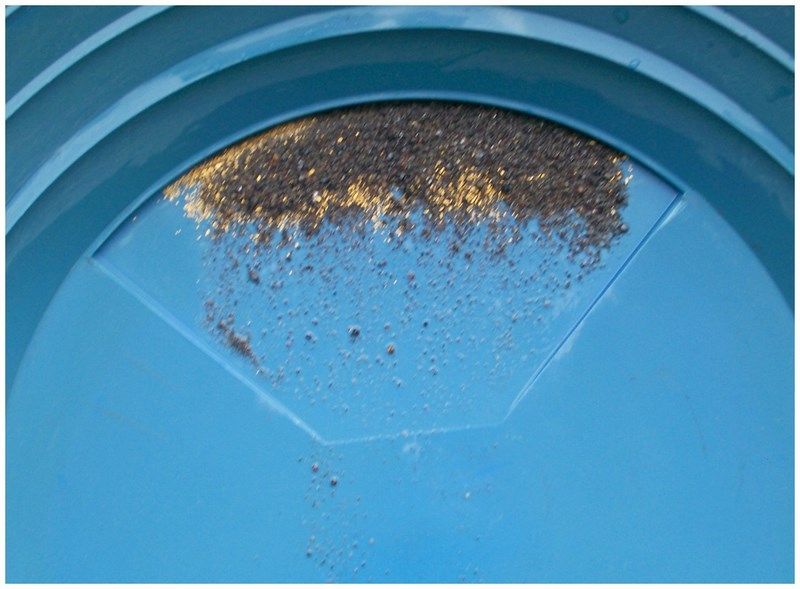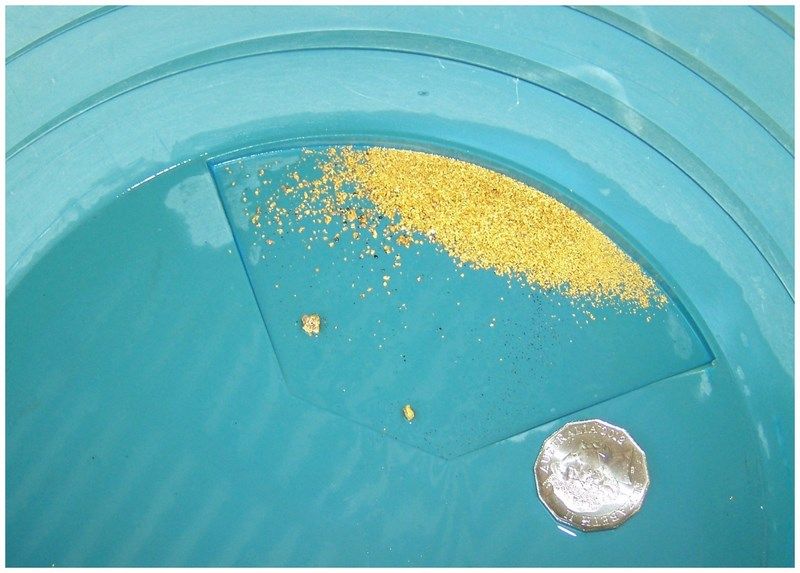G
Guest
Separating Gold from Black Sands.
Panning is above all the most critical part of prospecting. It is the end process of your day long quest, and as a prospector you must know how to finish off your clean up pans. Over the years I have shown so many people the art of finishing most picked it up very well but then there were others no matter how hard they tried just could not master the art. Some prospectors are under the impression that when panning you must be fast and the clean-up must be done in a flash, not so. Been fast at panning does not make you good with a pan at clean-up time.. It really does not matter how long it takes you to pan a dish or do your clean up what does matter is that you do it right, after panning for a time speed will come naturally. Over the years I have posted a lot on this subject on other forums. But let us first look at gold pans. There are so many gold pans on the market today it is so hard to find the one that is right.
The Tin dish. This pan is made of tin and will hold its blue it is light and very easy to use.
The mild Steal pan. Very much like the tin dish, but the mild steal pan will not hold its blue and weighs a bit more than the tin dish but is easy to use.
The Fibreglass range of pans are good. But there is a problem with fibreglass pans. That is they will chip easily if big rocks are dropped into them. And if you accidentally drop them the pan it will more than likely break or chip. The weight is another factor most are heavy. This is what I have been told I have never used a fibreglass pan nor do I want too. I can only go on what I have been told by people who have been in the game a long, long time.
The Plastic range of pans on the market today is very good. These pans are light weight low maintenance and very easy to use. But they must be seasoned before using them in earnest. To season a plastic pan you can rub them over with a bit of very fin wet and dry sandpaper or use them for a day out in the field as a sampling pan. I find the sand paper trick is the way to go. As with the Fibreglass and Plastic pans you must give them a wash out with biodegradable dishwashing liquid to remove any oils or grease which may be in the pan. Heat will also effect a plastic pan and care must be taken with the pan. But when the plastic pan starts to whiten after a lot of use. You can bring back the colour by heating them with a gas gun. But you must be careful when doing this or you will melt the pan, if you apply to much heat at once. {see below photos}
When the plastic pan starts to whiten.
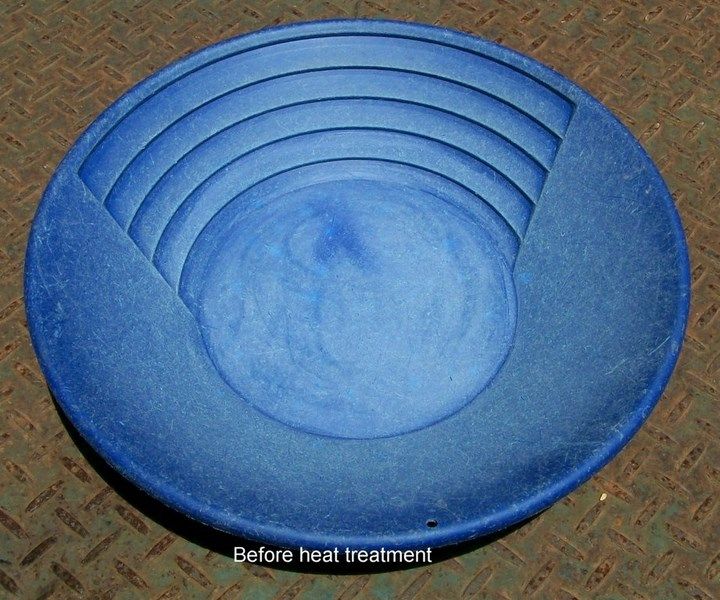
You can bring back the colour by heating them with a gas gun.
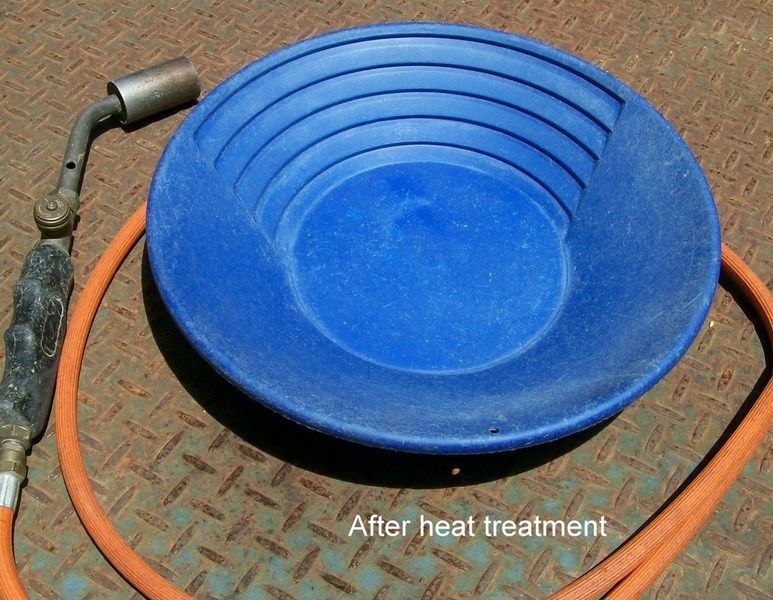
The leading range of pans on the market today is the Garret range. They are the most used in the field today by prospectors, and the Garret Super Sluice the most popular out of that range.
I have NOT used the turbo pan and likes so I cant make comment on them sorry.
What I look for in a pan.
I use two types of pan the Garret Super Sluice for finishing off and a cheap black or blue plastic pan for general sampling and at times finishing off. Before each trip I wash and clean all my equipment including the pans with biodegradable soap to remove any oils.
When the time comes to replace a pan, say I am going to replace my finishing pan this is what I look for. A colour which will make the gold and black sands stand out, green or blue are the best for this. I then need a pan with a wide bottom which makes the separation of the gold and black sand so much more easier. The narrow bottom pans will drive you nuts, when you try to separate. And if you are using a black pan forget it the gold will stand out but the black sand will be hidden. A lot of this I have already posted in this thread which also contains some exultant information.
https://www.prospectingaustralia.com/forum/viewtopic.php?id=14320
Separating Gold from Black Sands.
First and foremost you must know the art of how to use a gold pan which will take a bit of practice. To separate gold from the black sands you must have a wide bottom pan the narrow bottom pans ****** your swirling motion. I need to take a step back and explain the swirling motion which will remove the black sand from your gold concentrate at clean up time. Here is what you do and it is very hard to explain more so than what it is to show. You need to gently run just over a cup full of water around either side of a Garrett super sluice pan or similar. The water must meet in the middle and on top of the wash then fall back down over it pulling black sands with it to the end of the pan against your body you will start to get a build-up of black sands at that end. You then wash the black sand build up off into your second pan.
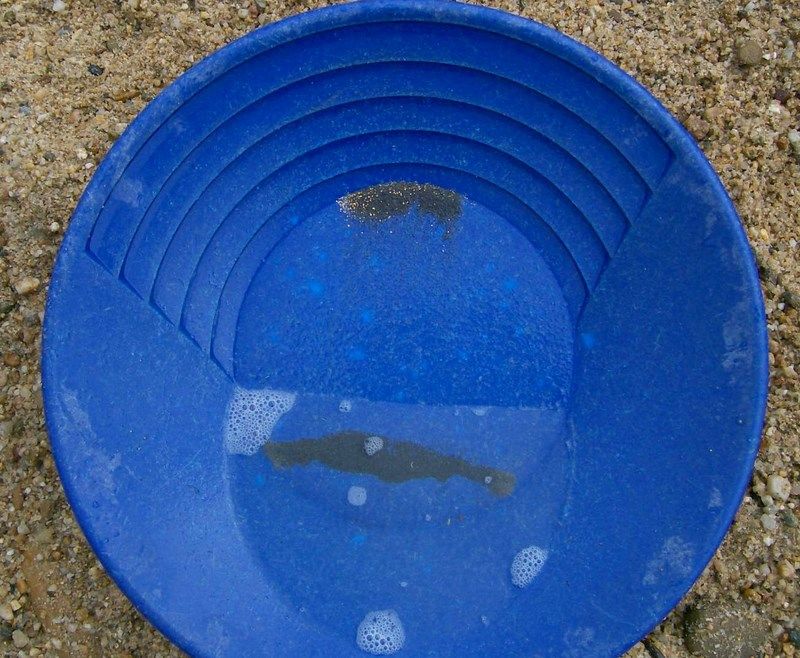
Then repeat working any visible gold back into the blacks as you go.
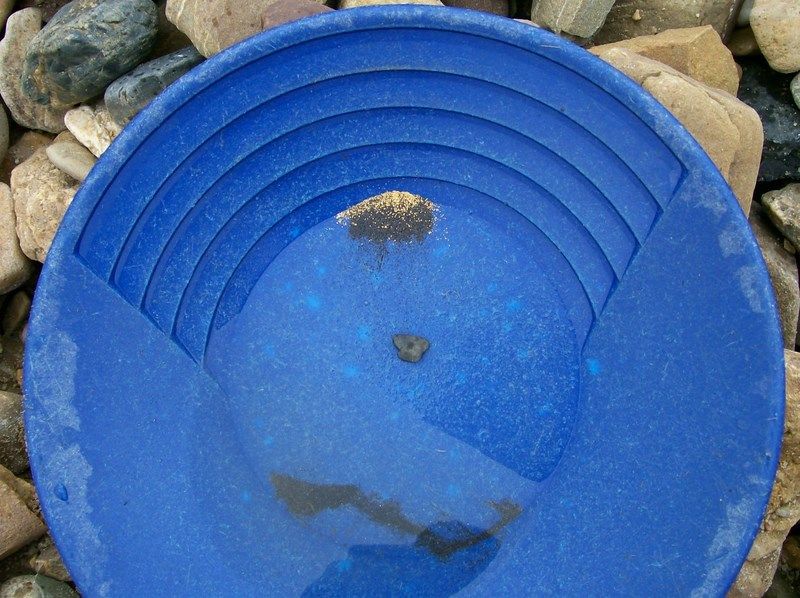
Until you have nothing but gold left. Keep the concentrate in the second pan for reprocessing at a later time. It is much better to be shown the back wash style, but alas not many know how to do this so if ever you get a chance to be shown take the time and learn the trick it will save you so much time. The main point to remember while doing this is not to be in too big of a rush, take your time. Develop your own style do not try and pan fast this will bring you undone in no time flat. Also remember new pans more so the plastic ones will need to be broken in this may take a day of panning to get the desired effect on the surface of the pan. A pan also needs to be washed out with biodegradable detergent to remove the oils this has been talked about.
A lot of people take the black sands home so they can sort them at their leisure; I have been told it saves valuable time in the field. There is nothing wrong with that idea except that 9 out of 10 times they never get done due to one reason or other. Or you may face the chance of your concentrate been split, dropped or some of them been used in a flower potting mix {by the wife lol been there} is very high. Youre much better completing the task out in the field. When panning your concentrate from your unit you should do it with clean water with a drop of biodegradable detergent in the water to break the surface tension and you must also use two pans for this job. No matter how good at panning you are there is always a bit of gold that will slip past but it will not be lost if you use the second pan.
You will hear of a lot of people using magnets, Im not real keen on this idea the reason been. If there is a very heavy display of mineral sands and you try to drag the mineral sands back from the gold the sand will trap gold and pull it down with it. The stronger the magnet the more trouble you will have, you are much better off using water. Do not ever glue a magnet in a pan silly idea. If you are panning clay silt you must make sure that all the clay has been dissolved, rinse the wash with clean water then pan it off.
It is not my intention to tell a person on how to prospect, I only offer guidance. What works well for me may not work well for you the same rule applies for the type of gear you have or are using. Whats good for you may not be good for me, I work on the kiss principal {keep it simple stupid}. My gear is designed to give minimum concentrate at clean-up time about of a Garret Super Sluice pan . Please keep in mind the type of post I do are only for guidance and are not meant to be read as be all end all.
2015
Panning is above all the most critical part of prospecting. It is the end process of your day long quest, and as a prospector you must know how to finish off your clean up pans. Over the years I have shown so many people the art of finishing most picked it up very well but then there were others no matter how hard they tried just could not master the art. Some prospectors are under the impression that when panning you must be fast and the clean-up must be done in a flash, not so. Been fast at panning does not make you good with a pan at clean-up time.. It really does not matter how long it takes you to pan a dish or do your clean up what does matter is that you do it right, after panning for a time speed will come naturally. Over the years I have posted a lot on this subject on other forums. But let us first look at gold pans. There are so many gold pans on the market today it is so hard to find the one that is right.
The Tin dish. This pan is made of tin and will hold its blue it is light and very easy to use.
The mild Steal pan. Very much like the tin dish, but the mild steal pan will not hold its blue and weighs a bit more than the tin dish but is easy to use.
The Fibreglass range of pans are good. But there is a problem with fibreglass pans. That is they will chip easily if big rocks are dropped into them. And if you accidentally drop them the pan it will more than likely break or chip. The weight is another factor most are heavy. This is what I have been told I have never used a fibreglass pan nor do I want too. I can only go on what I have been told by people who have been in the game a long, long time.
The Plastic range of pans on the market today is very good. These pans are light weight low maintenance and very easy to use. But they must be seasoned before using them in earnest. To season a plastic pan you can rub them over with a bit of very fin wet and dry sandpaper or use them for a day out in the field as a sampling pan. I find the sand paper trick is the way to go. As with the Fibreglass and Plastic pans you must give them a wash out with biodegradable dishwashing liquid to remove any oils or grease which may be in the pan. Heat will also effect a plastic pan and care must be taken with the pan. But when the plastic pan starts to whiten after a lot of use. You can bring back the colour by heating them with a gas gun. But you must be careful when doing this or you will melt the pan, if you apply to much heat at once. {see below photos}
When the plastic pan starts to whiten.

You can bring back the colour by heating them with a gas gun.

The leading range of pans on the market today is the Garret range. They are the most used in the field today by prospectors, and the Garret Super Sluice the most popular out of that range.
I have NOT used the turbo pan and likes so I cant make comment on them sorry.
What I look for in a pan.
I use two types of pan the Garret Super Sluice for finishing off and a cheap black or blue plastic pan for general sampling and at times finishing off. Before each trip I wash and clean all my equipment including the pans with biodegradable soap to remove any oils.
When the time comes to replace a pan, say I am going to replace my finishing pan this is what I look for. A colour which will make the gold and black sands stand out, green or blue are the best for this. I then need a pan with a wide bottom which makes the separation of the gold and black sand so much more easier. The narrow bottom pans will drive you nuts, when you try to separate. And if you are using a black pan forget it the gold will stand out but the black sand will be hidden. A lot of this I have already posted in this thread which also contains some exultant information.
https://www.prospectingaustralia.com/forum/viewtopic.php?id=14320
Separating Gold from Black Sands.
First and foremost you must know the art of how to use a gold pan which will take a bit of practice. To separate gold from the black sands you must have a wide bottom pan the narrow bottom pans ****** your swirling motion. I need to take a step back and explain the swirling motion which will remove the black sand from your gold concentrate at clean up time. Here is what you do and it is very hard to explain more so than what it is to show. You need to gently run just over a cup full of water around either side of a Garrett super sluice pan or similar. The water must meet in the middle and on top of the wash then fall back down over it pulling black sands with it to the end of the pan against your body you will start to get a build-up of black sands at that end. You then wash the black sand build up off into your second pan.

Then repeat working any visible gold back into the blacks as you go.

Until you have nothing but gold left. Keep the concentrate in the second pan for reprocessing at a later time. It is much better to be shown the back wash style, but alas not many know how to do this so if ever you get a chance to be shown take the time and learn the trick it will save you so much time. The main point to remember while doing this is not to be in too big of a rush, take your time. Develop your own style do not try and pan fast this will bring you undone in no time flat. Also remember new pans more so the plastic ones will need to be broken in this may take a day of panning to get the desired effect on the surface of the pan. A pan also needs to be washed out with biodegradable detergent to remove the oils this has been talked about.
A lot of people take the black sands home so they can sort them at their leisure; I have been told it saves valuable time in the field. There is nothing wrong with that idea except that 9 out of 10 times they never get done due to one reason or other. Or you may face the chance of your concentrate been split, dropped or some of them been used in a flower potting mix {by the wife lol been there} is very high. Youre much better completing the task out in the field. When panning your concentrate from your unit you should do it with clean water with a drop of biodegradable detergent in the water to break the surface tension and you must also use two pans for this job. No matter how good at panning you are there is always a bit of gold that will slip past but it will not be lost if you use the second pan.
You will hear of a lot of people using magnets, Im not real keen on this idea the reason been. If there is a very heavy display of mineral sands and you try to drag the mineral sands back from the gold the sand will trap gold and pull it down with it. The stronger the magnet the more trouble you will have, you are much better off using water. Do not ever glue a magnet in a pan silly idea. If you are panning clay silt you must make sure that all the clay has been dissolved, rinse the wash with clean water then pan it off.
It is not my intention to tell a person on how to prospect, I only offer guidance. What works well for me may not work well for you the same rule applies for the type of gear you have or are using. Whats good for you may not be good for me, I work on the kiss principal {keep it simple stupid}. My gear is designed to give minimum concentrate at clean-up time about of a Garret Super Sluice pan . Please keep in mind the type of post I do are only for guidance and are not meant to be read as be all end all.
2015




